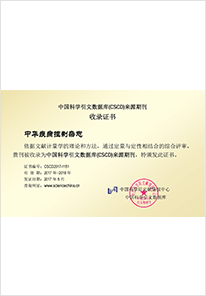2023 Vol. 27, No. 5
Display Method:
2023, 27(5): 497-502.
doi: 10.16462/j.cnki.zhjbkz.2023.05.001
Abstract:
The occurrence of water pollution and its adverse health effects and future countermeasures in China
2023, 27(5): 503-507.
doi: 10.16462/j.cnki.zhjbkz.2023.05.002
Abstract:
2023, 27(5): 508-515.
doi: 10.16462/j.cnki.zhjbkz.2023.05.003
Abstract:
2023, 27(5): 516-521.
doi: 10.16462/j.cnki.zhjbkz.2023.05.004
Abstract:
2023, 27(5): 522-527.
doi: 10.16462/j.cnki.zhjbkz.2023.05.005
Abstract:
2023, 27(5): 528-533.
doi: 10.16462/j.cnki.zhjbkz.2023.05.006
Abstract:
2023, 27(5): 534-539.
doi: 10.16462/j.cnki.zhjbkz.2023.05.007
Abstract:
2023, 27(5): 540-545.
doi: 10.16462/j.cnki.zhjbkz.2023.05.008
Abstract:
2023, 27(5): 546-550.
doi: 10.16462/j.cnki.zhjbkz.2023.05.009
Abstract:
2023, 27(5): 551-556.
doi: 10.16462/j.cnki.zhjbkz.2023.05.010
Abstract:
2023, 27(5): 569-573.
doi: 10.16462/j.cnki.zhjbkz.2023.05.013
Abstract:
2023, 27(5): 574-580.
doi: 10.16462/j.cnki.zhjbkz.2023.05.014
Abstract:
2023, 27(5): 581-586.
doi: 10.16462/j.cnki.zhjbkz.2023.05.015
Abstract:
2023, 27(5): 587-592.
doi: 10.16462/j.cnki.zhjbkz.2023.05.016
Abstract:
2023, 27(5): 593-597.
doi: 10.16462/j.cnki.zhjbkz.2023.05.017
Abstract:
2023, 27(5): 598-604.
doi: 10.16462/j.cnki.zhjbkz.2023.05.018
Abstract:


 Email alert
Email alert RSS
RSS Abstract
Abstract HTML
HTML PDF
PDF





